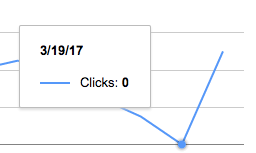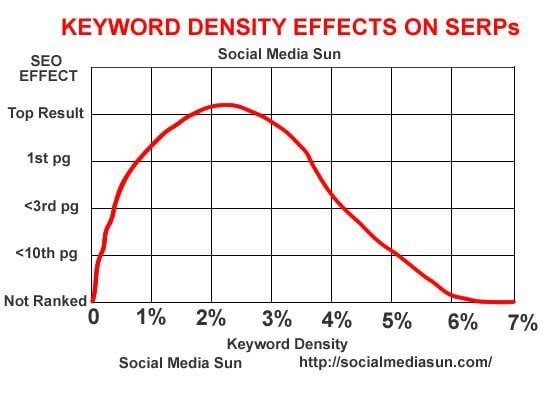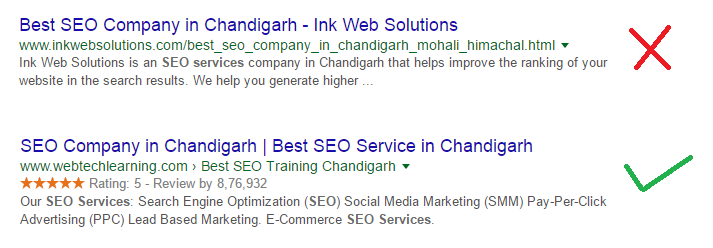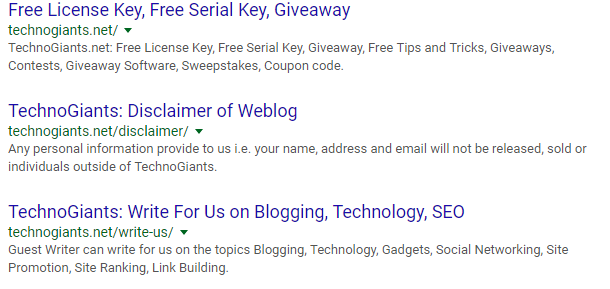
5 Ways Content Editors can kill your On-page SEO
6 minutes | Word Count: 1150Creating high-quality content and branding have always been the key point of inbound marketing. A lot of us take this very lightly and aggressively focus on building links after links to rank higher rather than working on the content of our site.
But, ever since Google has rolled out its latest Algorithm update- Fred (March 2017), more than 30% of the websites have lost as much as 50-60% of their organic traffic.
This incident, for sure, made it very clear, that the sites with irrelevant, duplicate or thin content would lose their SERP rankings eventually.
(Recommended: Read about the Google friendly content characteristic given by an SEO company in India)
You’ll now have to keep your content, SEO-optimized to rank higher in SERPs. But this might affect your On-page SEO leads if this is not done properly by your content editors.
Here, I am outlining some crucial points to keep a watch on, while you get your on-page SEO content revised.
1. Creating Low Quality Content
Content Editors often focus on quantity rather than quality of the content. Your content needs to achieve two major goals: appealing to the end-user and be a problem solver (loaded with the information users want).
But, the search engine bots do not have human intelligence to judge the pages on this criterion. So, what they do, is to look for some other things as their checklist to qualify your content.
Let’s take a note of what these things are:
- Length – Google prefers long content typically of 2000+ words. Some people write meaningful content in a small number of words. But this is considered as the thin content by Google bots.This creates an impression that your content won’t satisfy the quench of any user who is looking for the comprehensive knowledge.
A research conducted by serpIQ, evaluated the top 10 ranking sites for a number of keywords and the results showed that the top 3 positions were bagged by websites having content of nearly 2400 words.
Though, Google hasn’t set a specific word count for the rankings, but this data reveals a quite lot on what you must focus.
- Duplicacy – Rewriting content that has already been posted on the web, is another mistake, that many content editors make.Google’s Panda update started detected “content farms” (copying of content) way back in 2011 and ever since then the sites with multiple pages of the same content are valued lower.
So, before you add content to your website, you should check the content your content editors have submitted for plagiarism through various online tools like Small SEO tools- Plagiarism checker, Copyscape for duplicates.
The best way to draft your content is to research, get the ideas and write a fresh piece of informative data. This would go a long way in protecting your rankings; in fact, it could even improve them.
2. Keyword Stuffing for SEO
Keyword stuffing is one of the oldest spam tactics that started out with the start of SEO. If you had to rank for say, 30 keywords, your content editors would give you those 30 keywords about 300 times on a page. This could get you penalized by Google.
Though Google has not specified how is okay, but based on a number of observations over the past years, I believe the keyword density in your content should not be more than 2-3% to achieve the desired results.
Keyword stuffing will have other adverse effects too:
- It will increase the bounce rate for your websites. You will further lose possible customers.
- If viewers find spamming keywords on your pages with little regards for creating engaging content, they’re less likely to stick around.
I recommend checking “How to Write SEO Optimized Content?” for valuable insights on writing content with proper keyword usage.
How to check keyword density?
Let’s say, you have done an article of 800 words and used your focus keyword 10 times.
- Now divide the number of times your keyword appears by the total number of words in your text:
10/800= 0.0125
- Multiply the above result by 100 to achieve your desired percentage.
0125*100= 1.25%, so that in my opinion is fine.
3. No Meta Tags Optimization
Meta title and descriptions works as a snippet copy for the searched phrases which gives information about the information of your web-page.
No Meta optimization means no presentation of your content in a search engine. (This is because when a user types in a query, search engine bots read the meta tags of sites and return the results based on the best suitable matches of the user’s query with the meta title and descriptions.)
Some people write Meta tags, but they still hold no value as they are inappropriate or are too lengthy to be presentable.
Tips to write Meta tags:
- Ensure the Meta Title and Description word limit.
- Write the description specifically about your page.
- Include call to actions (they attract users).
- Include target keywords; it will get bold if it matches to the user’s search query.
- Refrain from copying your competitor’s Meta Descriptions.
Here are some to-the-point and effectively written Meta Tags:
4. Missing Referral links /Page Links
References make your content more believable. If you’re giving out reference of a another website in your content, it makes your content appear natural and genuinely helpful for the users.
You can add rel=”nofollow” tag to these links to prevent the link juice from passing onto the referred sites.
Rules of linking:
- Provide at least one relevant link in the first two paragraphs.
- Provide links to the internal pages of your site to keep your web-pages interlinked.
- Don’t use your money keywords for placing the external website’s links.
5. Incorrect Heading Tags
If you haven’t use heading elements correctly, it will disrupt the semantic structure of your web page.
Correctly defined heading is crucial towards optimizing the website for search engines. Your users can scan the content more easily if you have used appropriate heading tags.

How you can detect if your editors have made improper usage of headings:
- If they have used <h2> heading before the <h1>.
- If they haven’t used <h1> heading at all.
- Unsymmetrical use of h1, h2, h3, h4 tags.
- If they have used multiple <h1> heading.
- If they haven’t used valuable keywords in heading tags.
You can check your content by various validating tools online that will check the markup validity of your content.
Use of proper headings defines the semantic structure of the web pages and Google prefer these type of pages as it is able to crawl them easily.
Conclusion
With enough discipline, you can make content editing successful without killing your On-page SEO. So, the next time you get a new piece of content crafted for your website, make sure that you take all the above factors into considerations right from the start.

























